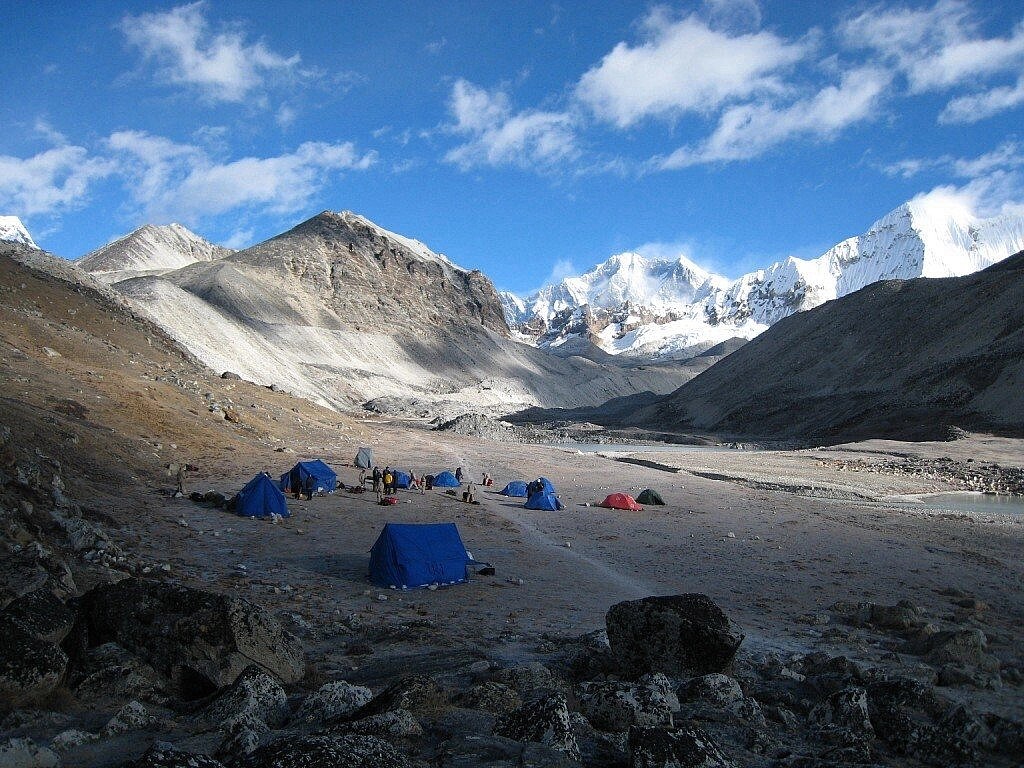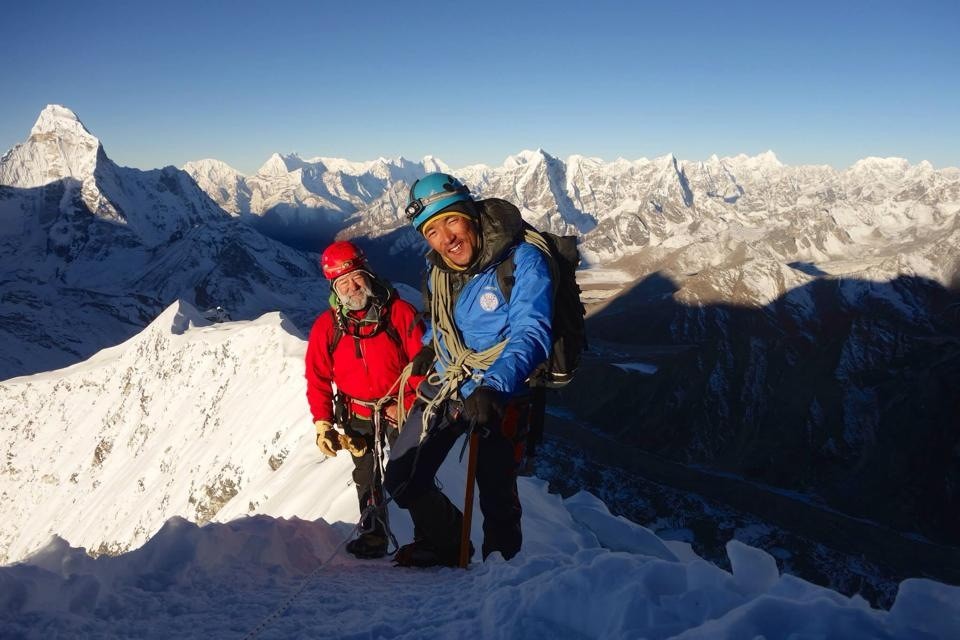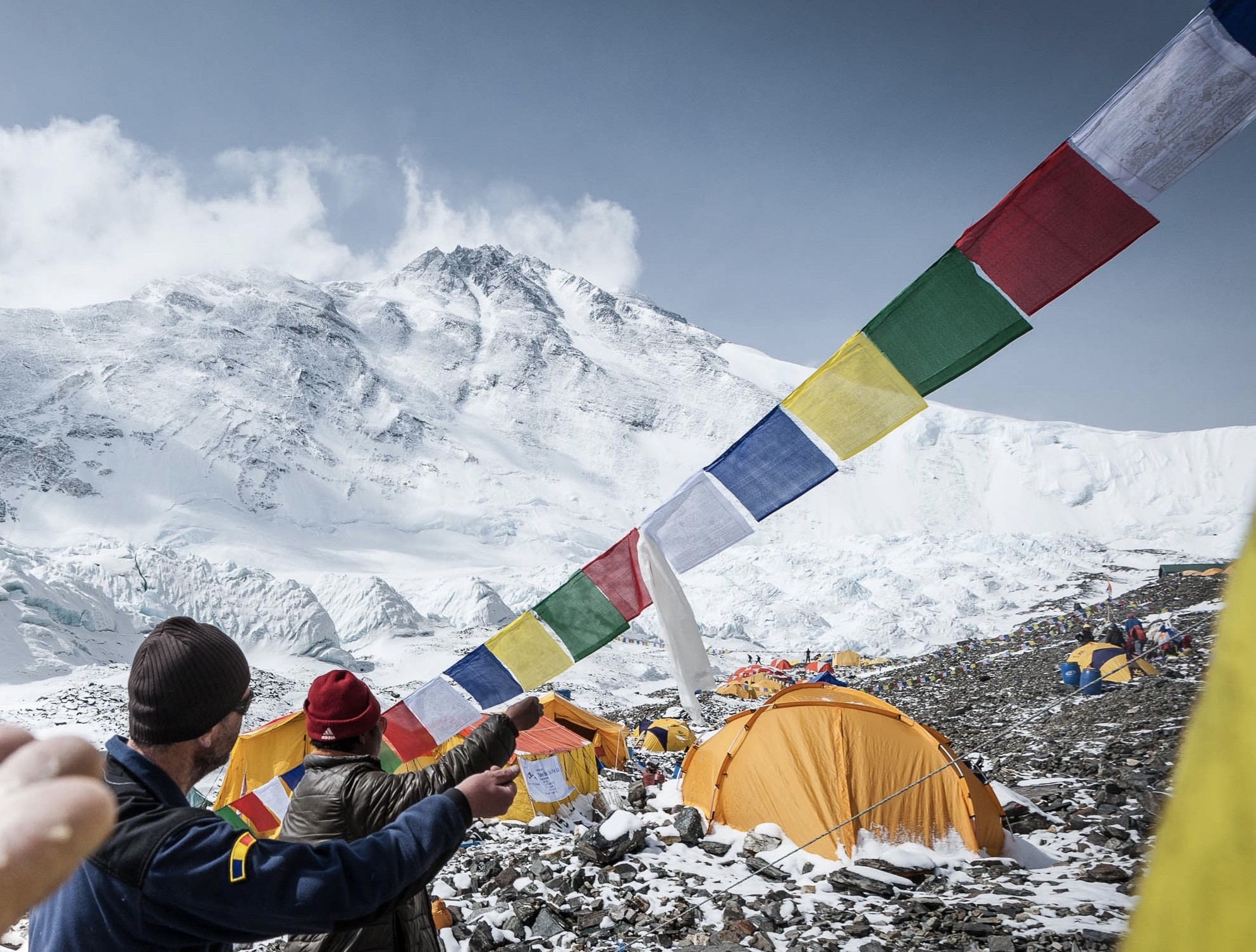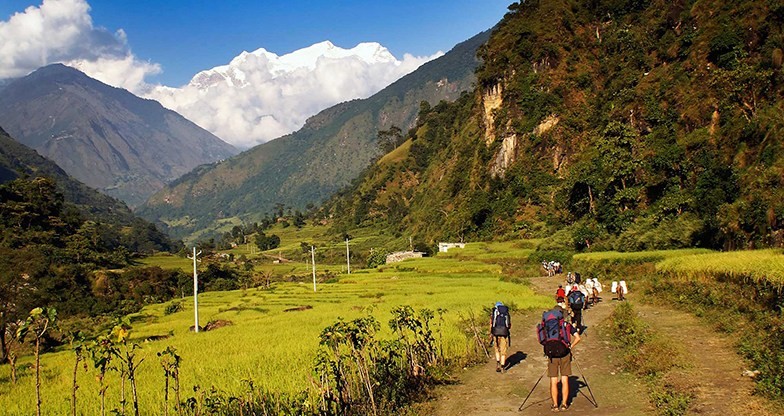

Mera Peak Climbing and Amphu Lapcha Pass adventure is a combination of trekking and climbing adventure that takes you to the summit of Nepal's highest trekking peak and experience the khumbu Valley at one go . This once-in-a-lifetime adventure leads you to one of the least visited trails in the Everest region. Mera Peak climbing and Amphu Laphca Pass (5,780m) trek are one of Nepal’s challenging off-the beaten-path trails that offers extraordinary Himalayan scenery. This expedition provides an opportunity for mountaineers to experience two valleys , linking them with a crossing of the remote and stunning Amphu Labtsa Pass (5,780m).This trip is an ideal choice for a true adventure seeker looking for a challenging adventure.
On our Mera Peak and Amphu Labcha Pass trip we climb one of the most fascinating trekking peak in Nepal. Anyone who has frequented the high Himalayas will agree that these 2 trip provides the finest views of the Himalayan vista.Most of the mountaineers does this trip via Zatrwa La Pass which is the quickest way to get to finish this trip. However, we trek into the mountain via a longer route, which provides better acclimatization. This also takes you off the beaten tracks and immerses the trekker into local culture along the way.We have designed our Mera peak itinerary in a professional manner with perfect acclimatization and contingency days.
Note:After ampha lapcha Pass you have options to climb island Peak or do Everest Base camp depending on time availability and if you prefer to do we will be more than happy to customize the trip .

Trip Highlight
DAY
1
DAY
2
DAY
3
DAY
4
DAY
5
DAY
6
DAY
7
DAY
8
DAY
9
DAY
10
DAY
11
DAY
12
DAY
13
DAY
14
DAY
15
DAY
16
DAY
17
DAY
18
DAY
19
DAY
20
DAY
21
DAY
22
Trip Start: 2025-10-10
Trip End: 2025-11-04
spots available
Trip Start: 2025-11-07
Trip End: 2025-02-24
spots available
Having the right equipment on your adventure trips will make almost as much difference to your success, safety, comfort, and enjoyment as any physical training you do. It is essential that you take the time to acquire the correct gear; don’t wait for the last minute to find out your local shop doesn’t have your size. This equipment is expensive, but you can often find great sales online and at your local gear store. The purpose of this gear list is to help guide your purchases.
This list is a guide. While you are required to bring everything on this list, there are numerous options, brands, and versions of each piece of equipment, unless otherwise noted. Using our current suggested brand list we encourage you to shop around, do research, use your experience and the listed features to find the best gear for you.
During your time in the mountains, you will encounter a very wide range of temperatures and weather conditions. At one end of this range is the pleasantly warm and beautiful low land, while at the other end of the spectrum is found the cold and often windy weather of the highest peaks in the world. The equipment you bring must function well in a wide variety of conditions. Your clothing should be warm, lightweight, dry quickly, and allow good freedom of movement. The layering principle, based on several thin layers of insulation
(rather than one thick one), covered with an outer weatherproof shell, meets these needs well.
A Note on Packing
For your international flights, we recommend that you pack all your equipment in your two duffle bags. Do not simply pack your backpack (since the straps can be damaged by the baggage handling machines). It is important to lock these bags for their trip. Depending on the airport, you may be able to put your travel locks on after TSA has searched the bags. If not, Lock the bags with Zip Ties. If the TSA cuts off the zip-tie to search your bag, they will replace it. You will still need the travel locks to lock your bags in the hotel and during the expedition. Generally, you will take one duffel up to Base Camp, and leave one in the hotel in Kathmandu with your belongings for your time in the city. Your trek in duffel will only be accessible in the evenings (with items such as changes of clothing, sleeping bag), and your day pack will hold vitals such as water, layering, blister kit, and camera.
Important Notes:
Tips:
Clothing
Footwear
Handwear
Headwear
Climbing Gears
Backpacking
Accessories
Hygiene and first aid
Others
1
Trekking the Amphu Lapcha Pass is difficult and physically challenging. So, for safety and to take in the breathtaking vistas, it is recommended to trek during the busiest times of year. The optimum seasons for the Amphu Lapcha Pass Trek are spring and fall. It is dangerous to climb during the winter, and only the most daring does it. When compared to peak seasons, summer is the least desirable. Overall, the fall season comes in second best to spring.
2
This is an expedition for mountaineers. Taken on their own, the Mera peak is not particularly difficult, but taken together, with the Amphu Labtsa (which is virtually another climb) in-between, they are a major challenge and should only be considered by fit and active climbers operating at Alpine PD+


